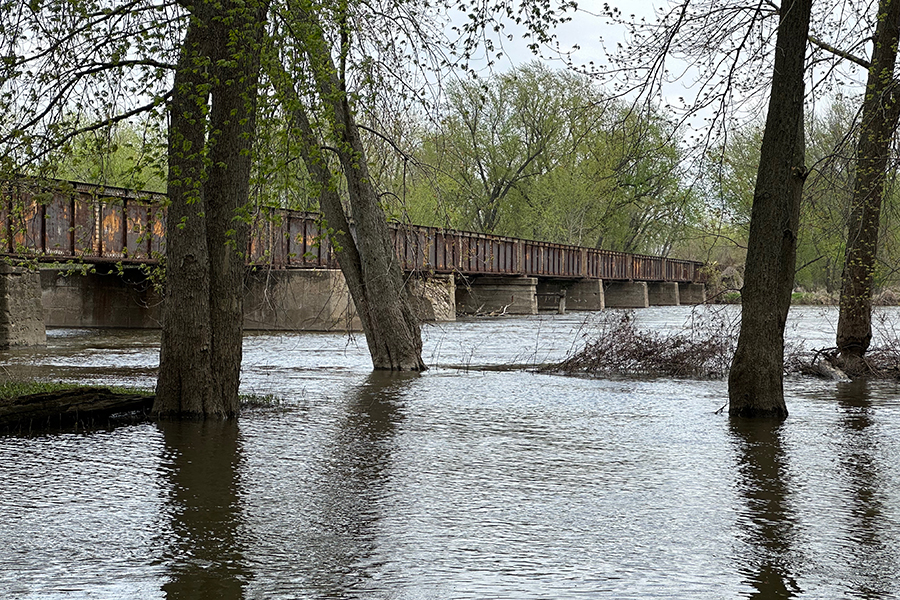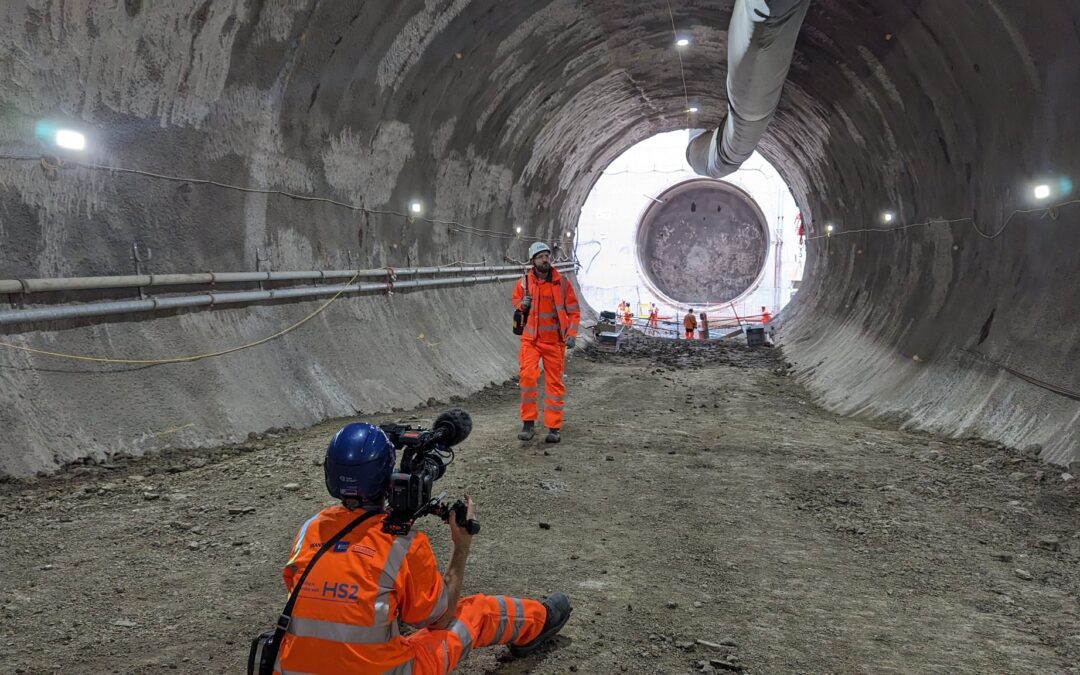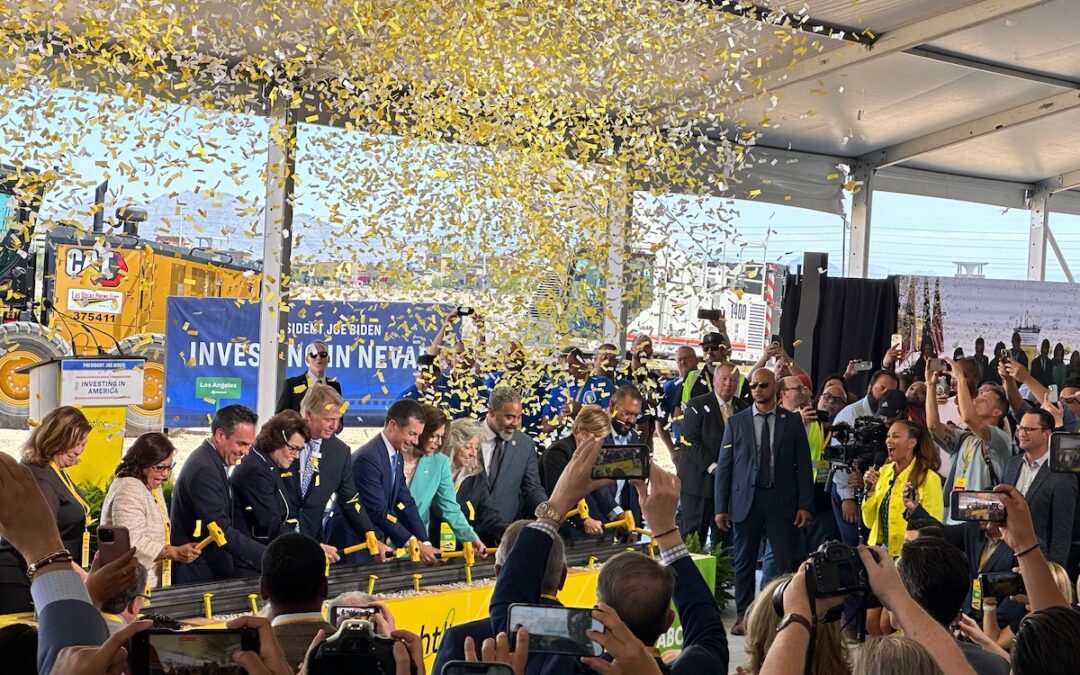10 steps need to be taken New York City’s Second Avenue subway extension opened in 2017. Five years earlier, Hamburg (German) completed an extension to the U4 line of its transit system. The projects were similar in many ways but radically different in one. Hamburg...
The first step towards a “pillar” corridor
Linking the Quad Cities to Chicago with trains has been in the Illinois Department of Transportation’s project pipeline for more than a decade. The first state funds were appropriated in 2009, and federal funds were secured in 2010. A total of $430 million is now available.
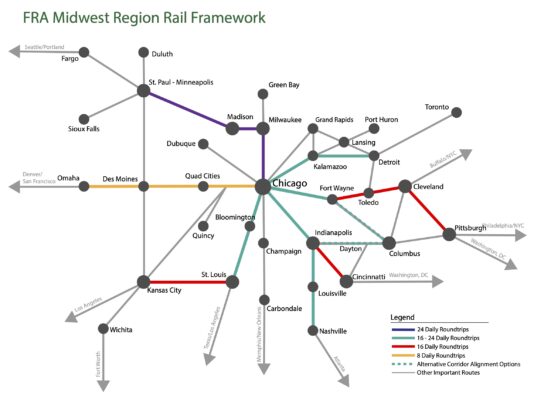
The Federal Railroad Administration has created a planning framework with 6 “pillar” corridors out of Chicago.
The project is stalled because the Wyanet – Moline segment of the former Rock Island RR, now owned by the Iowa Interstate RR, is in worse shape than planners expected. The cost of reconstructing it to passenger train standards exceeds $800 million. Replacing a critical bridge over the Rock River is one big ticket item.
Illinois should find the funds to reconstruct the Wyanet-Moline segment as soon as possible.
Tying the Quad Cities to Chicago will boost many of the state’s vital businesses and institutions—including John Deere’s global headquarters, Western Illinois University, and the Rock Island Arsenal. Service from Chicago to the Quad Cities is also the first step toward implementing the Federal Railroad Administration’s Midwest Regional Rail Plan, which lists Chicago – Omaha as one of six “pillar” corridors. Train service in that corridor would tie the Quad Cities, Omaha, Des Moines, the University of Iowa, and Cedar Rapids into a much stronger economic unit.
At the same time, Illinois should commit to reconstructing the entire Rock Island Corridor—including the Peoria branch—and initiating Regional Rail service within it (i.e., trains running every two hours, on memory schedules). Combined, these two lines could yield hourly service along the Illinois River and deliver a huge win for the state’s economy, for the environment, and for the millions of students, workers, executives, and tourists who move through the corridor each year.
The Corridor
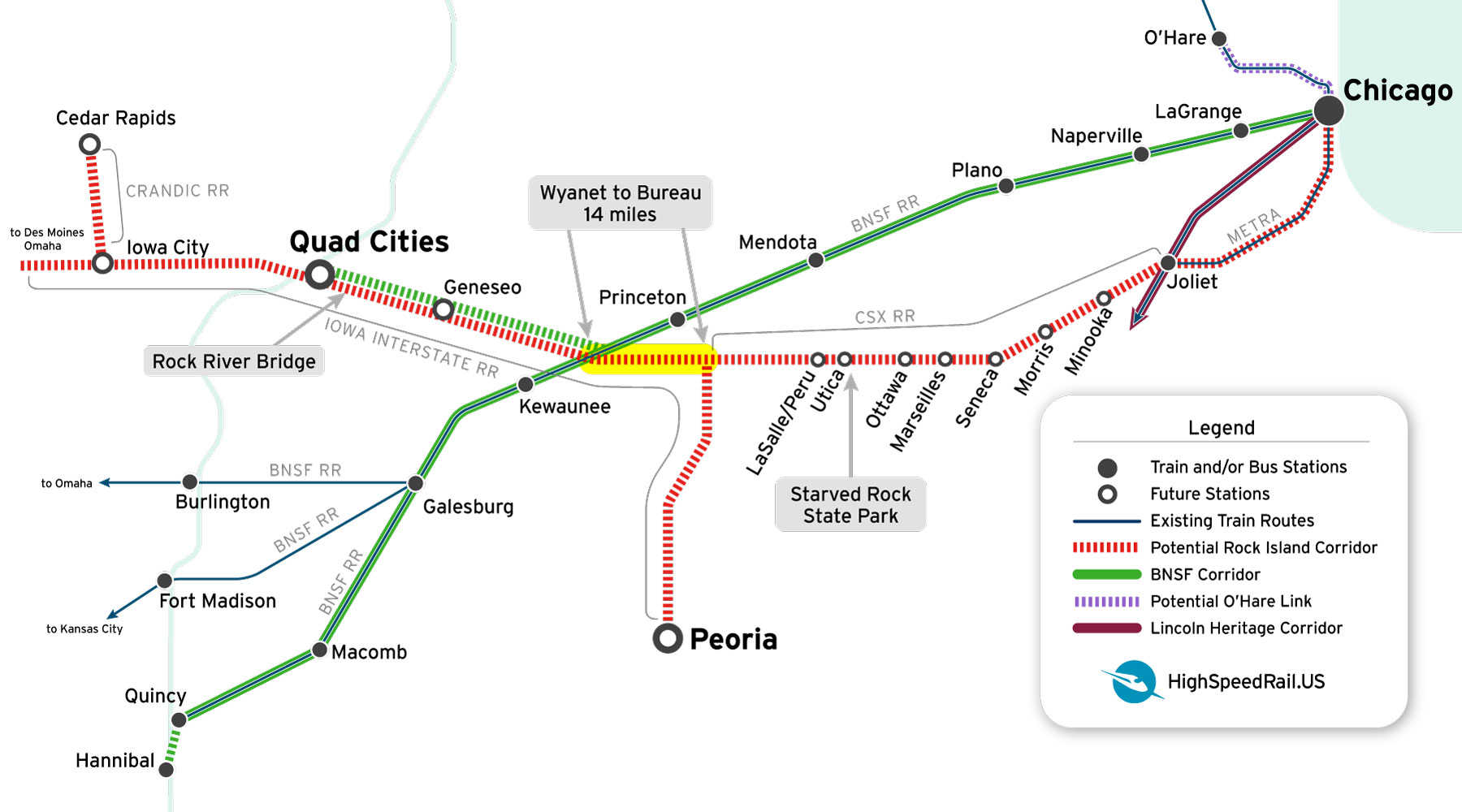
Backstory
In 2007, when the plan to build a connection to the BNSF line at Wyanet was first floated, it seemed like an expedient way to get service up and running without reconstructing the entire Rock Island Corridor to Chicago. The Rock Island is fine for slow freight trains running just a few times a day—but unacceptable for passenger trains. Bringing it up to passenger-train standards will require extensive track repair and expensive bridge replacements. Consequently, rebuilding just the 40 miles from Wyanet to Moline seemed like a good first step as political support for more extensive service grew.
But the quick-start project hasn’t been able to move to completion. And, in any case, it’s not the right long-term solution.
The BNSF is a very busy freight railroad, so expansion toward high-frequency passenger-train service will be very difficult. The few remaining slots on the BNSF should be used to add service to Galesburg, Macomb, and Quincy. A big picture, long-term view is needed to understand why the first segment is worth the cost in spite of these limitations.
The political landscape has changed.
First, the Bi-Partisan Infrastructure Law (BIL) has created new programs for the investments needed for this and other corridors.
Second—and just as importantly—Peoria and communities along the Illinois River are aggressively pursuing new service on their portion of the Rock Island Corridor. As a result, IDOT has agreed to add the route to the official state rail plan, which leaves just a 14-mile gap between Wyanet and Bureau Junction that IDOT does not intend to rebuild.
If that 14-mile segment is rebuilt, the Moline and Peoria proposals can be combined into a single corridor that handles not only more freight service but high-frequency regional rail service from Moline to Chicago.
All of which makes the cost of replacing the Rock River bridge a wise long-term investment.
A three-step plan
Step 1: Identify funding and reconstruct the Wyanet – Moline segment.
The Quad Cities have waited long enough for trains. Illinois should get the currently proposed underway as soon as possible. The new connection at Wyanet will simultaneously increase passenger-train service and offer Illinois shippers new options for routing their freight.
Step 2: Commit to Regional Rail for the entire Rock Island Corridor.
The value of high-frequency passenger service in the corridor will make the expense of re-constructing the Wyanet – Moline segment easier to understand.
Step 3: Begin design work for the entire corridor asap.
IDOT should work with the Iowa Interstate and CSX railroads to rebuild the entire Rock Island line within Illinois, which will improve the quality of life in smaller towns along the Illinois River while making Starved Rock—one of the state’s most popular tourist attractions and day trips—an easy trip from both sides of the state.
In short, this plan will create strong connections between key businesses, institutions, and tourist attractions across Illinois and eastern Iowa. Employers like Caterpillar and institutions like Bradley University will be much more accessible, and connections between Illinois and eastern Iowa will be much stronger.
At the same time, freight shippers will get substantial new capacity.
It’s a win-win-win that’s both doable and long overdue.
The Illinois General Assembly should create a Statewide Railway Program to fund projects like this
The Latest from HSRA
Our Latest Blog Posts
Check out the latest news, updates, and high speed rail insights from our blog!
